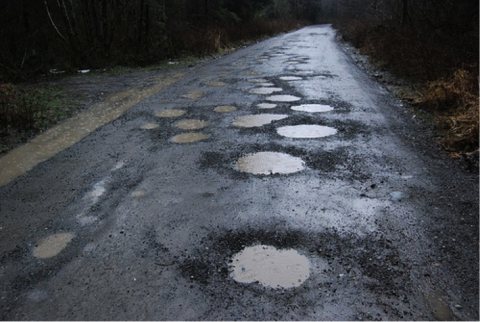
Hitting a pothole with your car can do a real number on tires, wheels, steering, suspension, and alignment.
Potholes occur when water permeates the pavement – usually through a crack – and softens the soil beneath it, creating a depression in the surface of the street. Many potholes appear during winter and spring months because of freeze-thaw cycles, which accelerate the process. Potholes can also be prevalent in areas with excessive rainfall and flooding.
The non-profit Car Care Council urges motorists to watch for three warning signs to help determine if hitting a pothole has damaged their vehicle.
- Loss of control, swaying when making routine turns, bottoming out on city streets or bouncing excessively on rough roads are indicators that the steering and suspension may have been damaged. The steering and suspension are key safety-related systems. Together, they largely determine a vehicle’s ride and handling.
- Pulling in one direction, instead of maintaining a straight path, and uneven tire wear, are symptoms of an alignment problem. Proper wheel alignment is important for the lifespan of tires and helps ensure safe handling.
- Low tire pressure, bulges or blisters on the sidewalls, or dents in the wheel rim will be visible and should be checked out as soon as possible, as tires are the critical connection between the vehicle and the road.
If you’ve hit a pothole, it can be difficult to know if and to what extent your car has been damaged. “It’s a good idea to describe the symptoms to a professional technician who can then check out the vehicle and make the necessary repairs to ensure safety and reliability.
 Mon-Fri: 8:00am-5:30pm
Mon-Fri: 8:00am-5:30pm
 (773) 238-1333
(773) 238-1333




 Sign-up today for service interval reminders such as: oil & filter, brakes, tires, and more... These parts are designed to wear & need to be replaced before any major damage occurs. We can help.
Sign-up today for service interval reminders such as: oil & filter, brakes, tires, and more... These parts are designed to wear & need to be replaced before any major damage occurs. We can help.